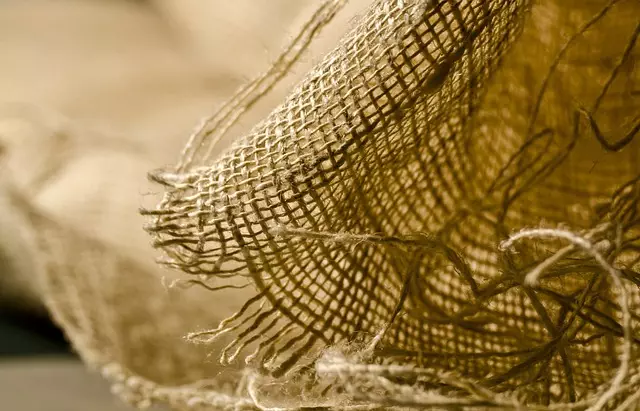The Maeng Da Kratom, a species of Mitragyna speciosa, is an impressive evergreen tree native to Southeast Asia, reaching heights between 10 and 30 meters with a broad canopy. Its large, leathery leaves feature a complex vein system that facilitates photosynthesis and houses the alkaloids mitragynine and 7-hydroxymitragynine, which are responsible for its medicinal and psychoactive effects. The tree's cultural significance in Southeast Asia is evident in its role in traditional medicine, where it has been used historically for stamina and stress relief. Maeng Da Kratom powder is known for its stimulating and calming properties, making it a popular supplement in the wellness industry, with users reporting benefits such as pain relief, mood enhancement, and increased energy. The tree's appearance, with its large, dark green leaves and intricate venation, not only defines its look but also contributes to its botanical uniqueness and the ongoing scientific interest in its potential applications.
Maeng Da Kratom, a botanical powerhouse originating from the dense forests of Southeast Asia, has garnered global attention for its unique effects and rich cultural heritage. This article delves into the intriguing aspects of the Maeng Da tree, revealing what a kratom tree looks like in its natural habitat and the significance it holds within local traditions. We will explore the complex alkaloid profile that distinguishes Maeng Da Kratom from other strains, shedding light on its potential effects. Additionally, we will examine the role of this potent herb in both historical practices and modern usage, offering a comprehensive understanding of this intriguing plant. Join us as we unravel the multifaceted nature of Maeng Da Kratom Powder, an evergreen topic of interest in the realm of natural supplements.
- Unveiling the Maeng Da Kratom Tree: A Glimpse into Its Distinctive Appearance and Cultural Significance
- Exploring the Alkaloid Profile of Maeng Da Kratom Powder and Its Effects
- The Role of Maeng Da Kratom in Traditional and Contemporary Uses
Unveiling the Maeng Da Kratom Tree: A Glimpse into Its Distinctive Appearance and Cultural Significance

Maeng Da Kratom, a species within the Mitragyna speciosa family, is a distinctive tree native to Southeast Asia, particularly in Thailand. The kratom tree itself boasts an impressive stature, often reaching heights of over 10 meters, with a broad canopy that provides ample shade and habitat for undergrowth. Its leaves are large and broad, with a leathery texture and a complex vein pattern that facilitates effective photosynthesis. The unique appearance of the Maeng Da kratom leaf is characterized by its dark green hue, wavy edges, and prominent veins, setting it apart from other strains of kratom. These leaves are where the alkaloids, primarily mitragynine and 7-hydroxymitragynine, are concentrated, which contribute to the plant’s pharmacological effects. Beyond its physical characteristics, the Maeng Da kratom tree holds cultural significance within the regions of its origin. It is often associated with folklore and traditional medicine practices, where it has been revered for centuries for its purported wellness properties. The tree’s resilience and adaptability to various soil types and altitudes are a testament to its robust nature, making it a cornerstone of biodiversity in its natural habitat. Understanding the kratom tree’s appearance and cultural importance sheds light on why this botanical has garnered global attention and curiosity.
Exploring the Alkaloid Profile of Maeng Da Kratom Powder and Its Effects

Maeng Da Kratom, a variant of Mitragyna speciosa, is renowned for its potent alkaloid profile, which contributes to its distinct effects. The kratom tree, whose scientific name is Mitragyna speciosa, is indigenous to Southeast Asia and possesses a unique structure with large leaves and a sturdy form, adapting well to the humid conditions of its native environment. The alkaloids present in Maeng Da Kratom, particularly mitragynine and 7-hydroxymitragynine, are responsible for the plant’s psychoactive properties. These compounds interact with the brain’s opioid receptors, influencing mood, pain perception, and energy levels. The specific alkaloid composition of Maeng Da is believed to produce a balanced and nuanced effect, which can vary from stimulating to sedating depending on the dosage consumed. Users report a range of experiences, from heightened alertness and increased motivation at lower doses to relaxation and pain relief at higher amounts. The effects of Maeng Da Kratom are subject to individual differences, with factors such as body chemistry, tolerance, and sensitivity playing significant roles in the user experience. Consequently, the exploration of its alkaloid profile not only deepens the understanding of its pharmacological properties but also aids consumers in making informed decisions about its use. Understanding what does a kratom tree look like provides a visual context to the source of this complex plant and its potential effects, adding an element of intrigue and education to the discourse surrounding kratom.
The Role of Maeng Da Kratom in Traditional and Contemporary Uses

Maeng Da Kratom, originating from the leaves of the Mitragyna speciosa tree native to Southeast Asia, has a rich history intertwined with traditional practices and contemporary use. The kratom tree itself is an evergreen, with broad leaves that are large and leathery, featuring a characteristic vein pattern resembling a mosaic. The tree’s height can vary, typically growing between 12 to 30 meters in the wild, with its leaves harvested for their alkaloid-rich content, which is pivotal to kratom’s effects. Historically, in regions such as Thailand and Malaysia, locals have chewed kratom leaves or brewed them into a tea as a stimulant during physically demanding tasks or as a sedative for relief from fatigue and stress. In modern times, Maeng Da Kratom powder has gained popularity for its unique balance of stimulating and soothing properties, making it a versatile product in the wellness industry. Extracts derived from this strain are often favored for their potency, with users reporting a range of benefits, including pain relief, mood enhancement, and energy support. The role of Maeng Da Kratom in both traditional and contemporary contexts underscores its multifaceted utility as a natural remedy and wellness aid, contributing to the ongoing research and discussions surrounding its use and potential applications.
Maeng Da Kratom, harvested from trees with distinctive characteristics and deeply rooted in cultural practices, has garnered attention for its complex alkaloid profile. This exploration has revealed not only the diverse effects of Maeng Da Kratom powder but also its significant role in both traditional medicine and contemporary usage. As a botanical curiosity, the Maeng Da tree stands out when one asks, “What does a kratom tree look like?” Its unique appearance is just one facet of this fascinating plant. Understanding the nuances of its use and effects is crucial for anyone interested in the broader scope of natural remedies. As interest in natural health solutions continues to grow, Maeng Da Kratom remains a compelling subject of study and discussion within the realm of botanical wellness.






